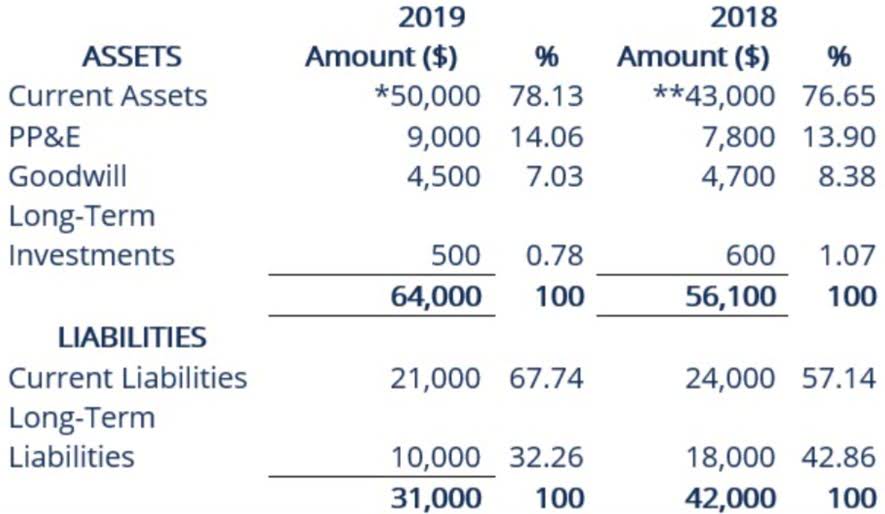
Description

Reconciling items are essential for aligning book balance with bank balance, involving the identification and resolution of discrepancies through bank reconciliation processes. Book balance holds significant importance in accounting as it serves as a basis for assessing a company’s financial position and ensuring adherence to accounting principles and regulations. Account reconciliation is then performed to verify the accuracy of the book balance by comparing the company’s records with external statements. In order to manage its cash flow activities and make sure it has enough money to function efficiently, Company X must keep records of its outstanding debits and credits. Therefore, until the interest is deposited and the bank accounts have been totaled, the interest created will not appear in the book balance.
- That said, this approach has many flaws that can trap a careless investor.
- With online banking and automatic bill payments, keep track of pending transactions that haven’t been deducted yet.
- You can also calculate book value by subtracting a business’s total liabilities from its total assets.
- This discrepancy can lead to serious financial inaccuracies, impacting the organization’s operations and reporting adversely.
- Under Tajima’s leadership, Tasaki appointed a design team that includes fashion designers Thakoon Panichgul and Prabal Gurung and jeweller Melanie Georgacopoulos (below).
- In an accounting period, “balance” reflects the net value of assets and liabilities to better understand balance in the accounting equation.
Definition of Bank Balance
- It serves as a critical tool for financial compliance, ensuring that organizations adhere to relevant regulations and standards.
- Knowing the book balance as of a specific date is important for several reasons.
- Not doing so can lead to bad results like incorrect tax filings, missed chances for growth, or even bankruptcy.
- When any of these differences have already been recorded in the company’s records but not those of the bank, they are itemized as reconciling items on the bank reconciliation.
- As a result, even if those funds have been used, X’s bank account would show that they are still available.
- If you want to keep all of your funds in one, flexible account where you have access to balance details, can use your card at ATM’s, and additional services, a money market account may be a good fit.
A savings account is a great way to start building and growing your savings in an interest earning, secure setting. You still have full-time access to this account like a checking account, but it offers additional services, and it’s a separate space where you can park cash you’d otherwise be tempted to spend. This can create significant implications for financial compliance and accounting standards, potentially undermining the organization’s overall financial responsibility.
What are the causes of disparities in balances per cash book and bank statement?
You need to know how aggressively a company has been depreciating its assets. If quality assets have been depreciated faster than the drop in their true market value, you’ve found a hidden value that may help hold up the stock price in the future. If assets are being depreciated slower than the drop in market value, then the book value will be above the true value, creating a value trap for investors who only glance at the P/B ratio.
How confident are you in your long term financial plan?
You won’t get this information from the P/B ratio, but it is one of the main benefits of digging into the book value numbers and is well worth the time. If a company is selling 15% below book value, but it takes several years for the price to catch up, then you might have been better off with a 5% bond. Failing bankruptcy, other investors would ideally see that the book value was worth more than the stock and also buy in, pushing the price up to match the book value. That said, this approach has many flaws that can trap a careless investor. A price-to-book ratio under 1.0 typically indicates an undervalued stock, although some value investors may set different thresholds such as less than 3.0. There is a difference between outstanding and issued shares, but some companies might call outstanding common shares “issued” shares in their reports.

What is the approximate value of your cash savings and other investments?
‘Balance of Power’ Review: Governed by Banks – The Wall Street Journal
‘Balance of Power’ Review: Governed by Banks.
Posted: Mon, 22 Apr 2024 07:00:00 GMT [source]
For this reason, all businesses need to reconcile their bank balance and book balance often. Not doing so can lead to bad results like incorrect tax filings, missed chances for growth, or even bankruptcy. But with proper reconciliation practices, businesses can evade these troubles and protect the integrity of their financial records. This might be from outstanding checks, deposits in transit, errors, or even fraud.
If a company or business is booming— it signifies that the sum of assets is higher than liabilities. Further, it means that the value of your company’s equity, or stock, will rise if business is thriving, and new financing options might become accessible. In banking and accounting, the balance is the amount of money owed (or due) on an account. Checks deposited, particularly on the last day of the month, may not be credited by the bank until they are collected from the drawee’s bank. In theory, a low price-to-book-value ratio means you have a cushion against poor performance.

This includes not only the actual cash, but also any checks or deposits that haven’t been processed yet by the bank. A bank reconciliation statement can be prepared to summarize the banking activity for an accounting period to be compared to a company’s financial records and book balance. From time to time, there are errors and adjustments that need to be made to bank transactions that would lead to discrepancies between the book balance and bank balance. If a check included in a deposit had insufficient funds, the bank would withdraw that money out of the company’s checking account. Reconciling bank balance and book balance is also key for financial planning and budgeting. Accurate financial records enable businesses to forecast future cash flows well, make strategic investments, and plan for possibilities.
What is a Book Balance?
All such information is provided solely for convenience purposes only and all users thereof should be guided accordingly. Finance Strategists has an advertising relationship with some of the companies included on this website. We may earn a commission when you click on a link or make a purchase through the links What is Book Balance on our site. All of our content is based on objective analysis, and the opinions are our own. That is to say, the amount of the balance will be the same while it is on different sides of the ledger. Book value shopping is no easier than other types of investing; it just involves a different type of research.

